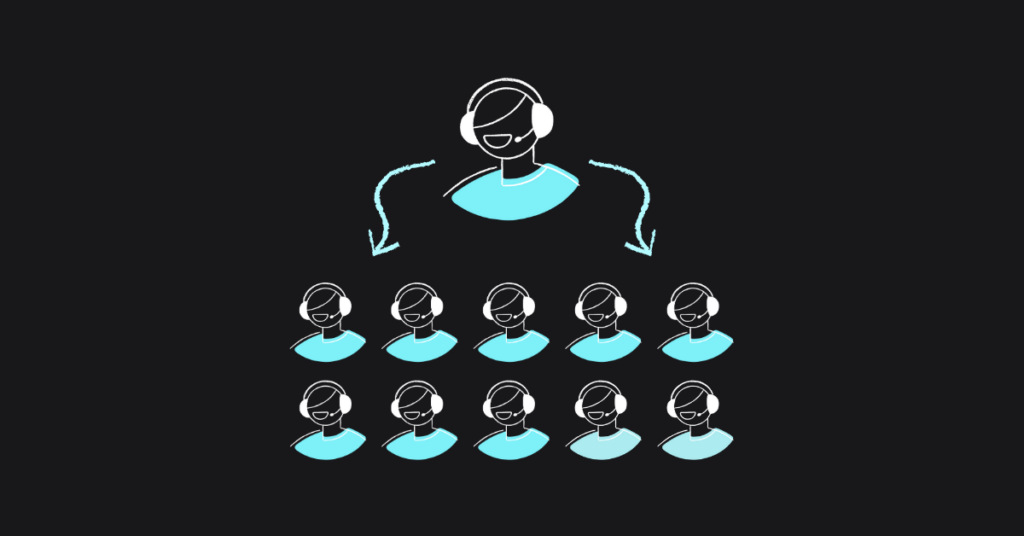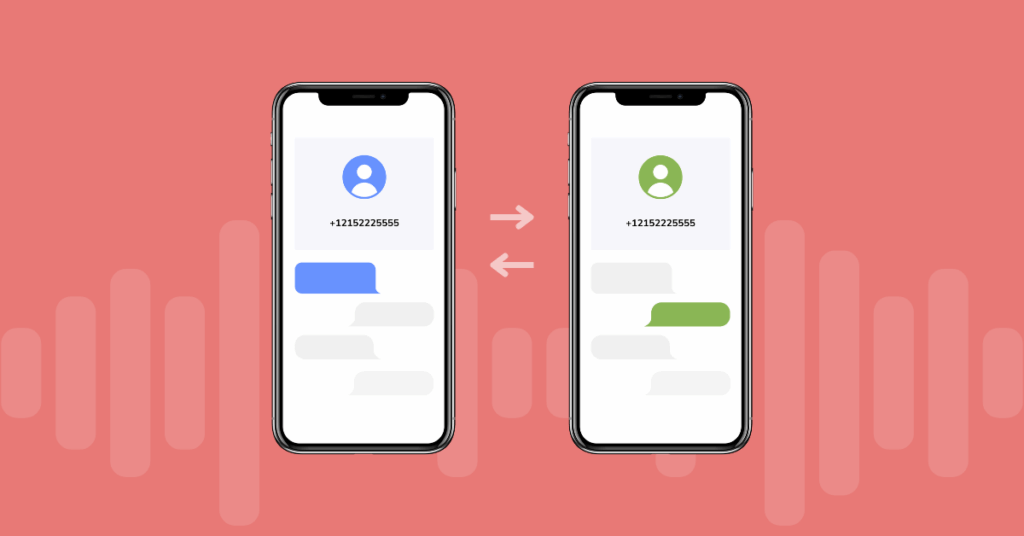What is Auto-Provisioning: An introductory guide for IT professionals
- Renier Schrenk

Table of contents
In IT, where change is the only constant and streamlining operations is necessary, auto-provisioning emerges as a key technological advancement. This approach reshapes how IT professionals handle resource management, especially in communication-oriented networks.
Whether running a burgeoning startup’s network or steering a sprawling corporation’s IT infrastructure, a clear understanding of auto-provisioning is crucial. Our blog post aims to offer a concise introduction to automated provisioning, guiding you through its functional benefits and how it can be a game-changer in optimizing your organizational operations.
We will pay special attention to the role of phone auto-provisioning in enterprises that depend on VoIP technology. Additionally, we will take a closer look at how VoIPstudio’s features in auto-provisioning set a benchmark in the industry, aligning with the evolving needs of IT environments.
What is automated provisioning?
Automated provisioning in IT management is a concept gaining increasing traction. But what exactly does it entail? Fundamentally, automated provisioning is the process of automatically setting up and managing users, software, and hardware systems. This approach contrasts with traditional, manual methods, which can be time-consuming and prone to human error.
Let’s break it down with an illustrative example: onboarding new employees. In a manual setting, preparing their accounts, access permissions, and necessary hardware might span hours or days. Automated provisioning transforms this experience:
- Streamlined user account creation: IT teams configure systems to automatically generate user accounts and assign resources based on pre-established rules.
- Diverse applications: The reach of automated provisioning extends beyond user setup. It includes deploying servers, configuring network devices, setting up cloud services, and installing applications.
- Scalability: The process is designed to adapt seamlessly to various IT environments, scaling effortlessly whether you’re managing a small team’s devices or a large enterprise’s complex infrastructure.
But it’s not just about saving time. Automated provisioning plays a crucial role in maintaining consistency and compliance across the IT infrastructure. By standardizing setups, it minimizes the risk of errors and security vulnerabilities that can arise from manual configurations.
In the next sections, we’ll explore how this technology unfolds in various scenarios, its benefits, and, specifically, its application in phone systems.
How to auto-provision users
Auto-provisioning users in an IT environment can be a game-changer for efficiency and operational smoothness. But how do you implement this process effectively?
Here’s a step-by-step guide. By following these steps, IT professionals can set up an auto-provisioning system that saves time and enhances security and consistency across the organization’s IT landscape.
1. Identify your needs and set objectives
Understand the specific requirements of your organization. This could include identifying the types of user accounts needed, the level of access each user should have, and any specific software or tools they require.
2. Choose the right auto-provisioning tool
Select a tool that aligns with your IT infrastructure. Consider factors like compatibility with your existing systems, scalability, security features, and ease of use.
Among the best-known auto-provisioning tools are SailPoint, OneLogin, Okta, and JumpCloud. For IT professionals looking to compare these tools in more depth, review sites like G2 offer comprehensive insights and comparisons
3. Define user roles and permissions
Establish clear roles and permissions for different types of users. This step ensures that each user gets access to the right resources without compromising security.
4. Create provisioning templates
Develop templates that outline the standard setup for each role. This includes software installations, network access settings, and other necessary configurations. For roles requiring telephony access, such as customer service representatives or sales teams, ensure their profiles include necessary phone system settings and permissions.
5. Automate account creation process
Integrate your auto-provisioning tool with your organization’s user directory (like Active Directory). Set it to automatically create accounts and assign them to the appropriate templates based on user roles.
6. Test and validate
Before rolling out on a larger scale, test the auto-provisioning process with a few accounts to ensure it works as expected.
7. Implement and monitor
Deploy the auto-provisioning system across your organization. Continuously monitor the process to address any issues and adjust as needed.
8. Regular updates and maintenance
Keep the system updated with the latest security patches and changes in your IT environment. Regularly review and refine your templates and rules to ensure they remain effective and secure.
Benefits of automatic provisioning
Understanding the benefits of automatic provisioning is key for IT professionals considering its implementation. This technology offers numerous advantages that can transform the efficiency and security of IT infrastructure.
Here are some of the primary benefits:
- Time efficiency: Auto-provisioning dramatically reduces the time required to set up new users and deploy systems. This leads to faster onboarding and quicker response to IT needs.
- Consistent and error-free setups: With standardized templates and automated processes, the consistency of setups across the organization improves, significantly reducing manual errors.
- Security enhancements: Automatic provisioning minimizes the risk of human error in security configurations, ensuring a more secure IT environment through consistent application of security policies.
- Scalability: The ability to efficiently manage changes in the number of users or the scale of operations makes auto-provisioning ideal for growing or changing businesses.
- Cost savings: Reducing manual labor and increasing efficiency translates into cost savings, allowing resources to be allocated to other critical areas of the business.
- Regulatory compliance: Staying compliant with ever-evolving regulations is simplified, as automated provisioning helps in consistently applying the latest compliance standards.
- Flexibility and adaptability: Auto-provisioning provides the agility to quickly implement changes across the IT landscape, crucial in today’s fast-paced technological environment.
- Positive user experience: For new team members, a seamless onboarding process with immediate access to necessary IT resources can greatly enhance their initial experience with the organization.
By integrating automatic provisioning, IT departments can realize a more streamlined, secure, and adaptable infrastructure.
The spectrum of auto-provisioning
Auto-provisioning is not a one-size-fits-all solution; rather, it’s a versatile technology that caters to a wide range of IT needs. Understanding its spectrum is crucial for IT professionals looking to implement it effectively in various scenarios.
Here’s an overview of the different areas where auto-provisioning can be applied:
- Network devices: Routers, switches, and other networking equipment can be automatically configured and managed, streamlining network operations and maintenance.
- Software and applications: From installing office productivity suites to setting up specialized software, auto-provisioning allows for the automated deployment and updating of software across an organization.
- Cloud services: In cloud computing environments, auto-provisioning is invaluable for managing resources like storage, compute instances, and application services, ensuring optimal use and cost-efficiency.
- User devices: Laptops, smartphones, and tablets can be auto-provisioned with the necessary settings, applications, and security protocols, ready for immediate use by employees.
- Server infrastructure: Whether it’s in a data center or cloud, servers can be provisioned with the required operating systems, configurations, and software, simplifying the process of scaling and maintaining server resources.
- Identity and access management (IAM): Automatically creating user accounts, assigning roles, and managing access rights ensures that the right people have the right access at the right time.
- Telephony systems: Phone systems including VoIP can be auto-provisioned to ensure that telephony resources are efficiently allocated and managed.
Each of these applications demonstrates the flexibility of auto-provisioning, allowing IT professionals to tailor the technology to their specific organizational needs. As we’ll explore further, this adaptability is especially beneficial in phone systems, where VoIPstudio leverages auto-provisioning to deliver a superior telephony experience.
Phone auto-provisioning: enhancing communication efficiency
Phone auto-provisioning, particularly in the context of VoIP (Voice over Internet Protocol) systems, is a critical aspect for modern businesses that rely heavily on efficient and reliable communication. Understanding how phone auto-provisioning works and its impact can help IT professionals manage telephony resources more effectively.
What is phone auto-provisioning?
Definition: Phone auto-provisioning involves the automatic configuration of VoIP phones and related communication devices within an organization. This process includes setting up phone numbers, voicemail, call routing, and other telephony features without the need for manual intervention.
How it works
- Centralized management: IT administrators can manage and configure phone settings from a central location.
- Deployment of settings: When a new phone is connected to the network, it automatically receives its configuration from a server, including firmware updates, user-specific settings, and other necessary parameters.
Benefits in a VoIP environment:
- Efficiency: Rapid deployment and updates to phone systems across the organization.
- Scalability: Easy to add or remove phones as the organization grows or changes.
- Consistency: Ensures uniformity in telephony configurations across all devices.
- Reduced IT Burden: Minimizes the workload on IT staff, as phones configure and update themselves automatically.
Challenges and solutions
- Network requirements: Ensuring the network can handle the VoIP traffic efficiently.
- Security: Implementing robust security measures to protect VoIP communication.
- Compatibility: Ensuring that the auto-provisioning system is compatible with various models and brands of VoIP phones.
Application in Business Settings
- Remote offices: Easily configure phones in multiple locations.
- Dynamic work environments: Quickly adapt to changes in staffing or office setups.
VoIPstudio’s auto-provisioning features reviewed
VoIPstudio offers a robust auto-provisioning feature set designed to streamline the management of SIP (Session Initiation Protocol) phones. This section reviews these features, emphasizing how they make VoIPstudio a compelling business choice.
Centralized SIP phone management
- One-click provisioning: VoIPstudio stands out with its ability to manage all SIP phones across an organization through a single, centralized interface. This simplifies the configuration and management process significantly.
- Efficiency and time-saving: Administrators can deploy, update, and manage SIP phone settings across the entire network with just a few clicks, eliminating the need for manual setup of each device.
Comprehensive compatibility
- Wide range of hardware support: VoIPstudio’s platform is designed to be compatible with various leading hardware brands, including Cisco, Snom, Grandstream, Yealink, and Aastra. This ensures flexibility and choice for businesses in selecting their hardware.
- Detailed configuration manuals: To aid in the auto-provisioning process, VoIPstudio provides comprehensive manuals and guides on their website, tailored to different hardware models. These resources are invaluable for ensuring smooth and successful device setups.
Key features of VoIPstudio’s auto-provisioning
- Automated setup for new devices: New SIP phones can be automatically detected and configured with the necessary settings as soon as they connect to the network.
- Custom configuration profiles: Allows for creating custom profiles for different types of users or departments, streamlining the deployment process and ensuring consistency.
Advantages for businesses
- Scalability: VoIPstudio’s auto-provisioning capabilities make it easy to scale telephony systems up or down as the business evolves.
- Security and reliability: With the automated, centralized approach, security settings are consistently applied, and the system’s reliability is enhanced.
- User-friendly interface: The platform is designed with user experience in mind, making it accessible for administrators regardless of their technical expertise.
Additional VoIPstudio features
- Beyond auto-provisioning, VoIPstudio boasts over 40 advanced call control features, including a complete call center, call recording, collaboration tools, virtual switchboard, and virtual numbers.
- The platform offers toll-free numbers, geographic numbers, call recording services, emergency call compliance, call logging, number porting, and failover protection.
- VoIPstudio also provides features like multipoint registration, allowing simultaneous access from various devices, including desk phones, softphones, or mobile apps.
Conclusion
Throughout this guide, we’ve delved into the world of auto-provisioning, unveiling its definition, practical implementation steps, and its many benefits in IT management. From enhancing operational efficiency to fortifying security, the advantages of incorporating auto-provisioning into your organizational infrastructure are substantial and far-reaching. We also discovered the broad spectrum of applications for auto-provisioning, extending from network devices to sophisticated telephony systems like those offered by VoIPstudio.
For businesses looking to harness the power of auto-provisioning, particularly in the context of telephony and communication, VoIPstudio presents a comprehensive and user-friendly solution. With its extensive support for various hardware, coupled with a wide array of features and capabilities, VoIPstudio is well-equipped to meet the diverse needs of modern businesses.
To experience the benefits VoIPstudio’s auto-provisioning can bring to your business communications, we invite you to sign up for a 30-day free trial. This trial is a no-obligation opportunity, allowing you to explore the full range of features and see the difference it can make in your operations. And if you have any questions or need assistance, our team is ready to help. Don’t hesitate to contact us for any inquiries or support.
Embark on a journey to streamlined, efficient, and robust IT and communication systems with VoIPstudio – where innovative technology meets practical solutions.
Start your 30-day free trial now.
Common questions about auto-provisioning answered
What exactly is auto-provisioning in an IT context?
Auto-provisioning refers to the automatic setup and management of IT resources like user accounts, software applications, and hardware devices. It involves using predefined templates and policies to automate these processes, reducing the need for manual intervention.
How secure is auto-provisioning? Can it pose any security risks?
Auto-provisioning is generally secure, as it standardizes the setup process and minimizes human error. However, like any IT process, it must be correctly configured and regularly updated to maintain security. It’s crucial to use secure templates and ensure that the provisioning system is only accessible to authorized personnel.
Can auto-provisioning be used for all types of devices and software?
While auto-provisioning is highly versatile, its applicability depends on the specific system and software. Most modern systems and cloud-based applications support some form of auto-provisioning. However, checking compatibility with each specific device or software is important.
Is auto-provisioning expensive to implement?
The initial setup of an auto-provisioning system can involve some costs, particularly if new software or tools are purchased. However, auto-provisioning can save money in the long run by reducing manual labor and increasing efficiency.
Can auto-provisioning be customized for specific business needs?
A: Yes, one of the key strengths of auto-provisioning is its flexibility. Businesses can customize provisioning templates and rules to meet their requirements, ensuring the system aligns with their operational needs and policies.
How does auto-provisioning impact the IT workforce?
Auto-provisioning can significantly reduce repetitive manual tasks, allowing IT staff to focus on more strategic and complex tasks. This can lead to a more efficient use of IT personnel and potentially greater job satisfaction due to less time spent on mundane tasks.
Can auto-provisioning handle changes in company size or structure?
Absolutely. Auto-provisioning is designed to scale with the organization. It can easily accommodate changes in company size or structure, such as adding new users or devices, without requiring a proportional increase in manual setup work.
How does phone system auto-provisioning work, particularly with VoIP?
Phone system auto-provisioning, especially in VoIP setups, involves automatically configuring VoIP phones with the necessary settings, such as phone numbers, voicemail, and call routing. This is typically managed through a centralized system where changes and updates can be pushed to all phones connected to the network.
More from the blog
Want to improve your business communication?
Unlock enterprise-class call center power at affordable prices – no hardware, no delays, no surprises!








